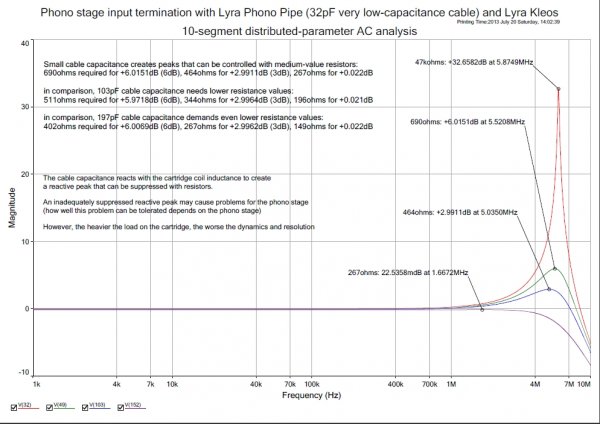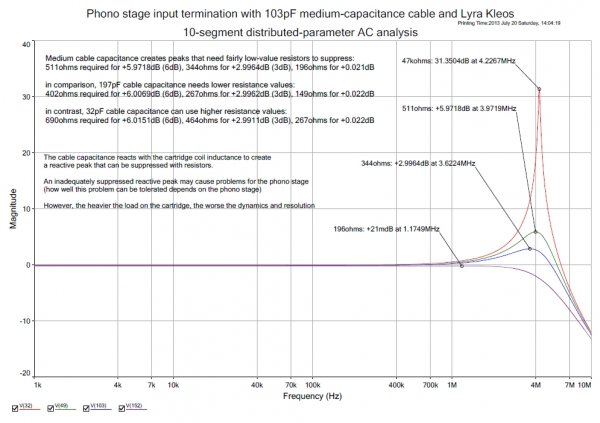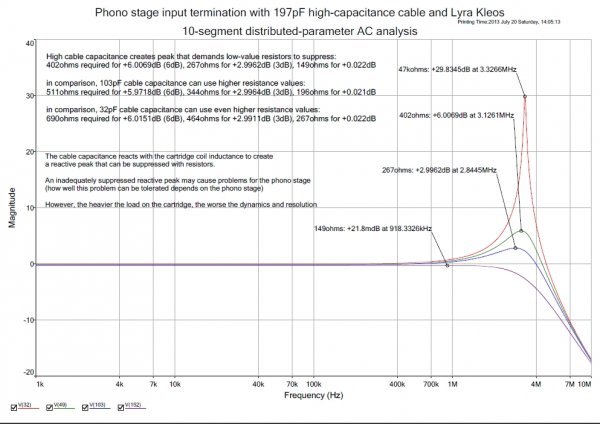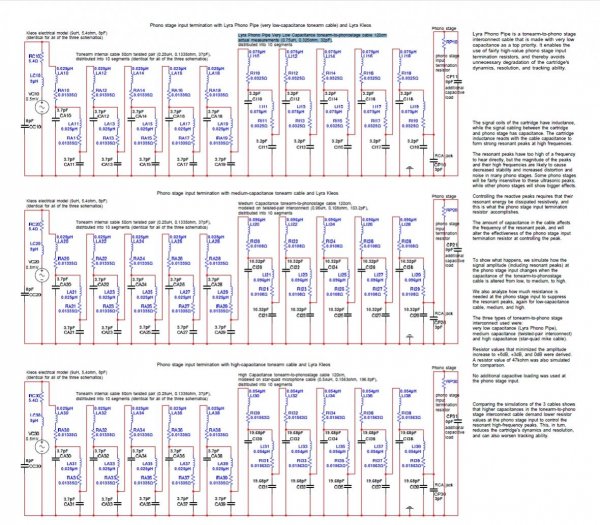What it boils down to is that loading matters to the sound, but there is some disagreement here as to why it matters and the cause of the sonic difference. One position is that low loading is preferred because it CAUSES distortion that is perceived as high frequency information and people have grown accustomed to, and prefer, the distortion. Another point made here is that RFI overloads some electronics causing distortion which is ameliorated by loading that damps RFI. I suppose these are not contradictory statements and they may both account for some preferring low loading and others preferring more loading. Jonathan Carr (Lyra cartridge designer/builder) says that low lading is preferable, because it preserves the high frequency response, which is one of the things people pay big bucks to get from MC cartridges, but, that higher loading might be necessary to kill RFI that can overload some gear (Atmasphere's position, and I tend to agree).
As to Atmasphere's response to my statements about the sonic effects of loading-- that loading has no effect on the cartridge, except to make the cantilever harder to move-- I was merely stating that the effects of loading changes can be heard, not that loading physically affects the cartridge. There are cartridge experts that say that the back EMF changes from loading are so negligible that the effect on movement of the cantilever is mostly theoretical an not a practical reality.
Perhaps my statement about having to compensate for difference in loudness where a low value resistor is used (high loading) was misconstrued. I was merely pointing out that when making a comparison, to be fair, one might have to increase the volume a bit for the high load scenario to compensate for the voltage drop across the load resistor; with a high value resistor (low load), that drop is less significant





